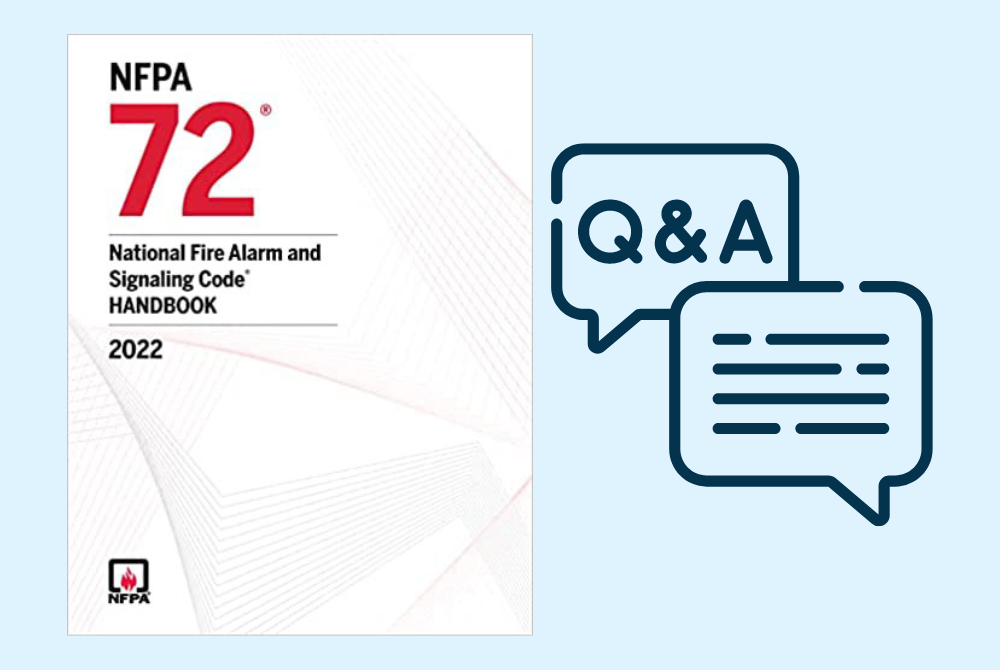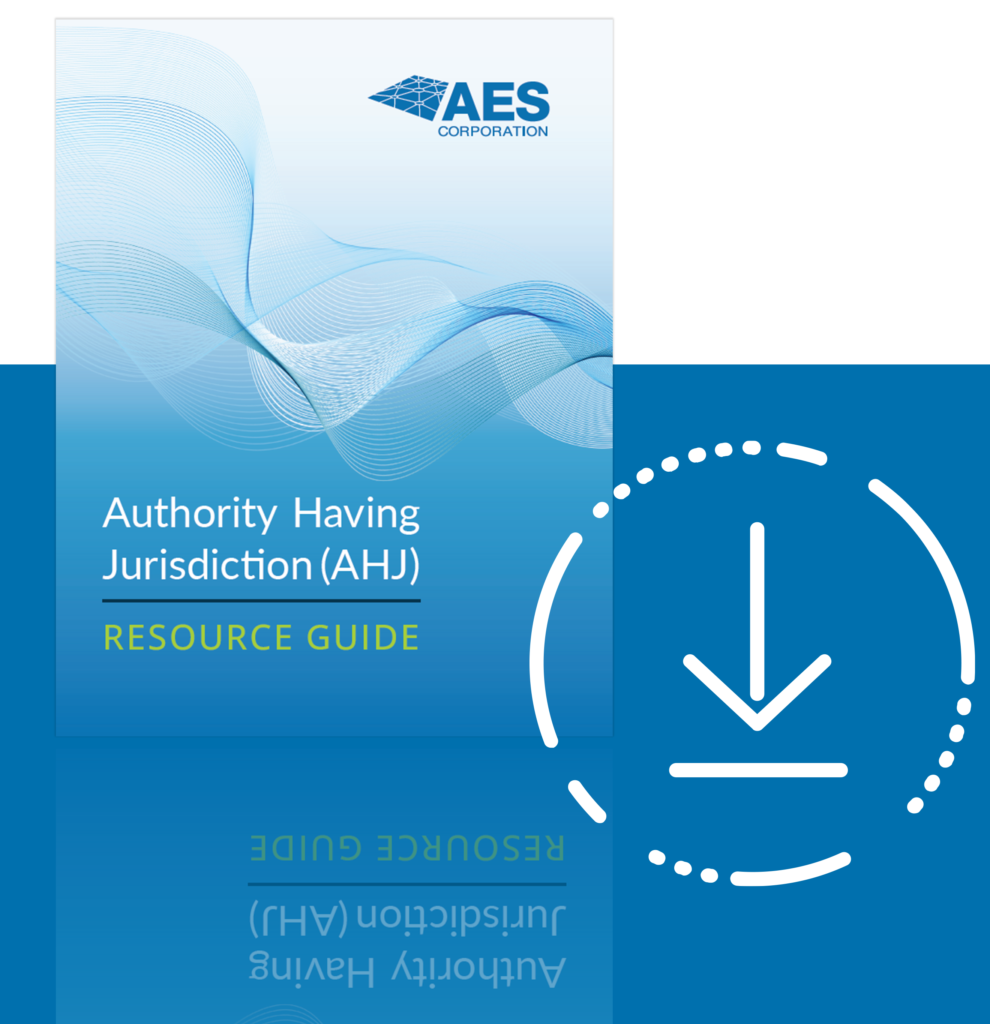
Introduction
Earlier this year, Art Black, founder of Carmel Fire Protection Associates and principal member of NFPA 72, sat down with Leonard Hanna, also a principal member of NFPA 72 (Supervising Station Fire Alarm and Signaling Systems) and AES Corporation’s Regional Sales Manager (Western US/Canada), as well as me, Amanda Beausoleil, AES’s Marketing Communications Manager, to discuss NFPA 72 and how it applies to AES’s technology.
In the interview that follows you will learn about Art Black, the longest standing member of NFPA 72, as he answers the most prevalently asked questions about NFPA code as it applies to AES Corporation’s alarm communications technology.
MEET ART BLACK
How Carmel, California Became the First Municipality in the United States to Require UL Certified Central Station Service Fire Alarm Systems
After serving for the Carmel Volunteer Fire Department for over a decade, Art Black became Fire Marshal in 1987. As the newly appointed Fire Marshal, one of Art’s first jobs was to change the outdated fire alarm system to something more reliable. After researching all available technology, Art decided that the most reliable fire alarm systems were Central Station Service, which were based on the 1985 – 1987 National Fire Protection Agency (NFPA) Standards. And that is how Ordinance #884, which stated that all fire alarm systems within the municipality of Carmel were required to be UL Certified Central Station Service Fire Alarm Systems, was written and signed into law by then Mayor, Clint Eastwood (yes, that Clint Eastwood).
Carmel, California is the first municipality in the United States to require UL Certified Central Station Service Fire Alarm Systems.
Joining NFPA 71 (Now NFPA 72, National Fire Alarm and Signaling Code)
Art’s central involvement in Ordinance #884 led to an invitation from the Chair of NFPA 71 to join the Central Station Technical Committee as a principal member. However, after a month of Art’s acceptance, Chapter 71 was disbanded and became Chapter 72, the Off-premises Monitoring Chapter of NFPA.
Industry Experience Spanning Over Three Decades
Over the next 30+ years in the industry, Art became the Chair of NFPA 72, which he sits on today as a principal member. He also retired as the city of Carmel’s Fire Marshal and opened his own consulting business, Carmel Fire Protection Associates. In his role as Founder and Principal of Carmel Fire Protection Associates, Art has acted as the consulting Fire Marshal for several districts throughout Monterey County, and still does today. During this time Art’s involvement with NFPA 72 led to an invitation from Underwriters Laboratory (UL) to lead a training program that would help extend the concept of Central Station Services and Certified Alarm Systems to fire protection officials throughout the country. Because, who better to talk to fire marshals than a fire marshal?
Writing the Code
During this time and still to this day, Art works as a member of NFPA 72 to not only teach the code to fire officials, but also to write it. Art says, “I’ve had to learn more about fire alarms that I ever wanted to know because we are writing the national standard on monitoring for fire alarm systems. And, not just for Central Station Services, but also Remote Station and Proprietary as well.”
AES ASKS ART BLACK TO EXPLAIN...
Given Art’s experience and list of impressive credentials, the team at AES could not pass on the opportunity to ask him common questions that we hear from dealers in the field.
1. Why is AES technology classified as a one-way private radio system and NOT a performance-based system?
All communications technologies used to transmit signals to supervising stations are covered in Chapter 26, Supervising Station Alarm Systems, of the NFPA 72 Code. Today, these technologies are organized into three categories, which are:
- 26.6.3 Performance-Based Technologies
- 26.6.4 Digital Communicator Systems (DACT systems)
- 26.6.5 Radio Systems (AES and all other cellular communication systems)
To put it simply, AES uses radio communications technology and therefore every code requirement for AES will fall under 26.6.5 Radio Systems.
However, in earlier editions of NFPA 72, the process was to specify and write code for each technology available. It was during the 1999 to 2002 publication that Chapter 72 of NFPA decided to take all the existing technologies and categorize them, leading to the above referenced sections.
AES technology is considered a radio system [26.6.5] because your radio transmitters are… radio transmitters – they are also repeaters, but that is part of the technology. You’re using radio frequency to transmit the signal off premises… AES is radio.
To put it simply, AES uses radio communications technology and therefore every code requirement for AES will fall under 26.6.5 Radio Systems.
2. Does an AES mesh Radio Alarm Transmitter (RAT) fall under 26.6.3.1.6 Multiple Technology Paths, or 26.6.5.2 One-way Private Radio Alarm Systems in NFPA 72?
As previously stated, any code pertaining to AES will be under section 26.6.5 Radio Systems. It is important to note that although AES and other communications technologies may meet certain 26.6.3 Performance-Based Technologies criteria, there are no existing technologies that meet all the requirements necessary to be categorized as performance-based.
Although AES has multiple communications technologies, at the end of the day, those Subscribers are radios that use radio frequency to transmit alarm signals. Therefore, AES is categorized under 26.6.5 by NFPA 72 standards. Any other code specifications, i.e., 26.6.3 or 26.6.4, do not apply to AES.
3. Why is it unnecessary to enforce DACT code when a DACT is only used to attach an AES IntelliPro?
There is confusion around having an old panel with a built-in DACT and plugging a radio into that panel. Whether it is AES Mesh or cellular communications, a lot of fire officials and alarm personnel think, ‘well I’ve got a DACT, so I should follow the DACT code’… but in this situation, the RF system is connected to the DACT, which converts that DACT into a translator.
To remedy this, the NFPA 72 2022 Code now specifically states that if a DACT is used strictly as a means of translation it is not a DACT anymore, it is a translator. This code can be found under 26.6.4.1.1, where it states:
The requirements [in the DACT Section] shall not apply when a DACT is used as a signaling interface from a fire alarm control unit to another listed communication means.
4. Why does DACT code require a 6-hour standby when all other technologies require 24 hours?
The reason why DACT timer tests changed from 24 to 6-hours is Hurricane Katrina. Before Hurricane Katrina, there were no regulations on back-up power for cell towers. So, when the storm knocked out all power, cell towers had no back-up system in place and died immediately. This resulted in cell phones not working throughout the crisis.
As a result, the federal government stepped in and mandated that every telephone network was now required to have 8-hours of standby power at minimum. Unfortunately, the government failed to specify that the regulation should only apply to cellular networks. So, when the ordinance was passed, phone companies that use to abide by the 96-hours of power standby were free to apply the new 8-hour requirement to their networks.
This resulted in the halt of copper cable usage in exchange for a more efficient and less expensive alternative, fiber. With the implementation of fiber cables in telephone networks, providers were able to put trickle charged batteries in their pedestals out on the street, while still meeting the new 8-hour standby minimum.
Because a phone line could be dead for any period between 8 to 24 hours without a check, NFPA had to change the code. Hence, time tests for phone lines are now every 6-hours to ensure a signal is caught before a line dies.
Conclusion
If you have questions for Art Black or Leonard Hanna regarding NFPA 72 code and AES technology, send them to hello@aes-corp.com.
Additional Resources

AHJ Resource Guide
A comprehensive guide that includes key information about AES technology, compliance details, and terminology.

Compliance Overview
A condensed version of AES product listings available for your reference.


1 Comment on “An Interview with Art Black and AES Corporation”
Great info on the reason for the change from 24 hour supervision to 6 hour supervision for DACT based monitoring. Thanks